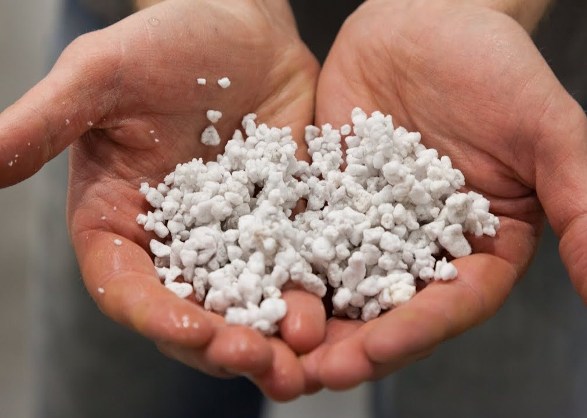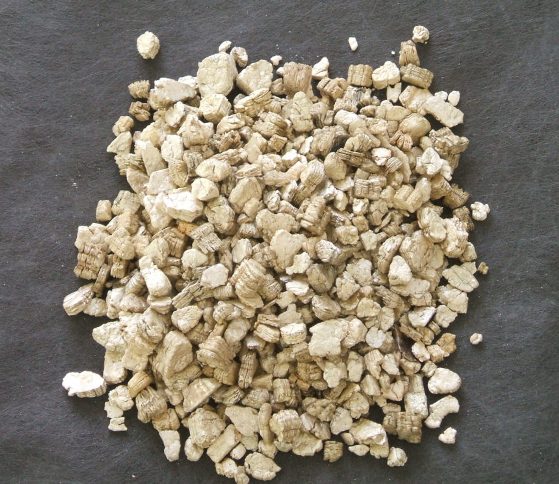When it comes to classical gardening, the type of gardening where it’s you, your garden, and whatever nature throws at you, soil is a considerable constant. The Midwest is famous for its fertile soil that produces a large portion of America’s food. The Florida panhandle has extremely sandy soil, while parts of Texas have soil defined by large volumes of clay. Greenhouse growing removes this constant. While it’s still possible for plants to grow in field soil in greenhouses, it’s discouraged due to the closed environment of a greenhouse and the limited volume of containers. To combat field soil’s inefficiency in greenhouses, a variety of different growing mediums have been established. Two of the most common are perlite and vermiculite. Due to their similar sounding names, perlite and vermiculite get mixed up from time to time.

Perlite
If you’ve ever bought a bag of soil and discovered that it has little white dots scattered throughout it, you might be looking at perlite. Perlite is formed when obsidian comes in contact with water, creating a type of volcanic glass best known for its ability to aerate soil and improve soil drainage. It expands when heated and is incredibly lightweight. A notable quality of perlite is that it does not hold water, which gives it an important place in hydroponics. If a plant needs to receive frequent water, perlite ensures that the soil does not become waterlogged. Plants that excel with perlite are plants that need to dry out before receiving more water. Such plants include cacti, succulents, garlic, and root vegetables (think carrots and turnips).

Vermiculite
Vermiculite is a type of silica, and it is colored a shade of brown. Unlike perlite, which is bright white and clearly noticeable in soil, vermiculite tends to blend in. Vermiculite is used by growers who need the soil to stay damp. It’s incredibly absorbent, retaining water that passes through the soil and preventing drainage. Since vermiculite keeps soil moist, it’s good for seed starting. Seeds planted in vermiculite are able to absorb plenty of water, which means that the seed coat will crack faster. Vermiculite also helps plants absorb necessary minerals, chiefly potassium and magnesium. It’s important to note that since vermiculite absorbs water, it is a poor fit for plants that need lots of oxygen. Since it traps water, it prevents plants from absorbing the oxygen atoms that are a part of H2O. If a plant loves moisture, it will enjoy a mixture of vermiculite in its growing medium. Such plants include ferns, philodendrons, basil, and parsley.
A Simple Takeaway
The important thing to take away is that perlite aerates soil, giving plants room to extend their roots and get a firm anchor. Perlite makes soil porous, so water drains easily in perlite growing mediums. Vermiculite absorbs water, so it keeps soil damp.
Joshua Nichols is the MyGardenAndGreenhouse.com associate editor.
Related Articles & Free Email Newsletter
A Lot of Things Can Be Used as Hydroponic Growing Medium




Comment here